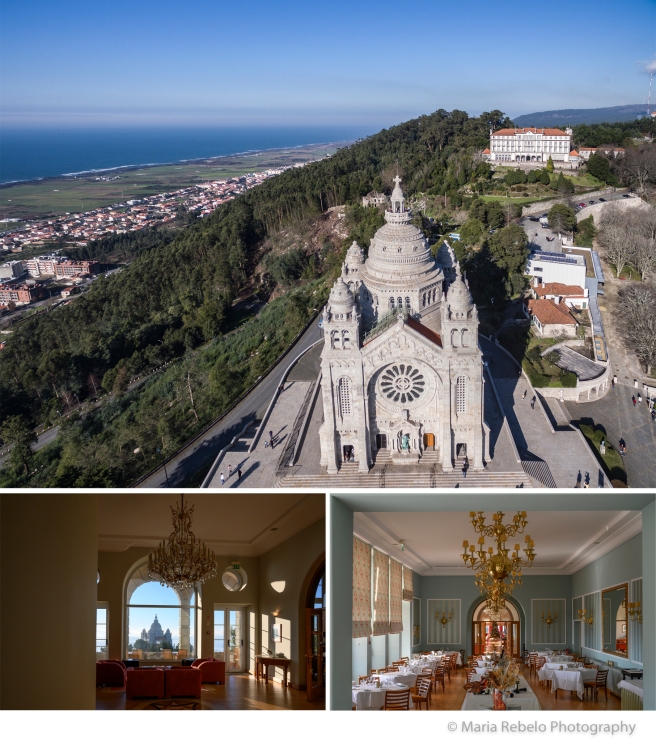
The narrow, meandering road that leads to the Guimarães pousada is good at keeping secrets; it gave us no glimpse of what this historical hotel looks like. When we arrived late in the afternoon, we were stunned to see the imposing granite facade of the church adjacent to the monastery bathed in golden light. Did the architects position the church to benefit from the sun’s exposure or did the sun move so it can shine on the magnificent building?
The origin of this monastery is intertwined with the early days of Portugal as a nation. It was built in the 12th century in fulfillment of a promise. Dona Mafalda, the wife of the first king of Portugal, vowed to fund the construction of a monastery for the order of Saint Augustine if she gave birth without complications. The monastery was named after the patron saint of expectant mothers, Santa Marinha.
In the 16th century, the monastery was transferred to the order of Saint Jerome. The monks offered university degrees in the arts and the humanities that attracted students from the royalty and nobility. It was during this time that the chapter room, the place where monks read chapters of the bible, and the famous Saint Jerome terrace, an outdoors meditation space, were built.
In 1834, when the state abolished the religious orders, the monastery was sold and became a private residence. In the 1950s, a fire destroyed part of the building and turned it into a ruin.
In the 1970s, the Portuguese government bought the monastery and hired architect Fernando Távora to convert it into an historical hotel. Távora did a masterful job of restoring the old and integrating it with the new.
Every morning we took a walk in the romantic woods that surround the pousada. It is a place with no traces of modern civilization, where damsels in silk dresses and knights in shining armor would not be out of place. We returned to the pousada summed by the chanting of the waters that flow from the fountain in the Saint Jerome terrace. Every minute spent in this terrace was a moment of zen.
The pousada has a proud gastronomic tradition. Its kitchen staff has accompanied the president on foreign diplomatic visits to showcase Portugal’s culinary heritage. The restaurant, decorated with elegant blue tile panels, occupies the space that was once the cellar. We tried two delicious entrées: baby goat rice and roasted black-pork shoulder. They were followed by an artisanal ice cream based on a traditional dessert from Guimarães: toucinho do céu. It is the kind of divine treat you would expect from a convent.
The Guimarães pousada is a history lesson, a gourmet destination, and the perfect place to rest and recharge.
The Guimarães Pousada is located at Largo Domingos Leite de Castro, Lugar da Costa, Guimarães tel. 351 253-5112-49. Click here for the pousadas’ website.










